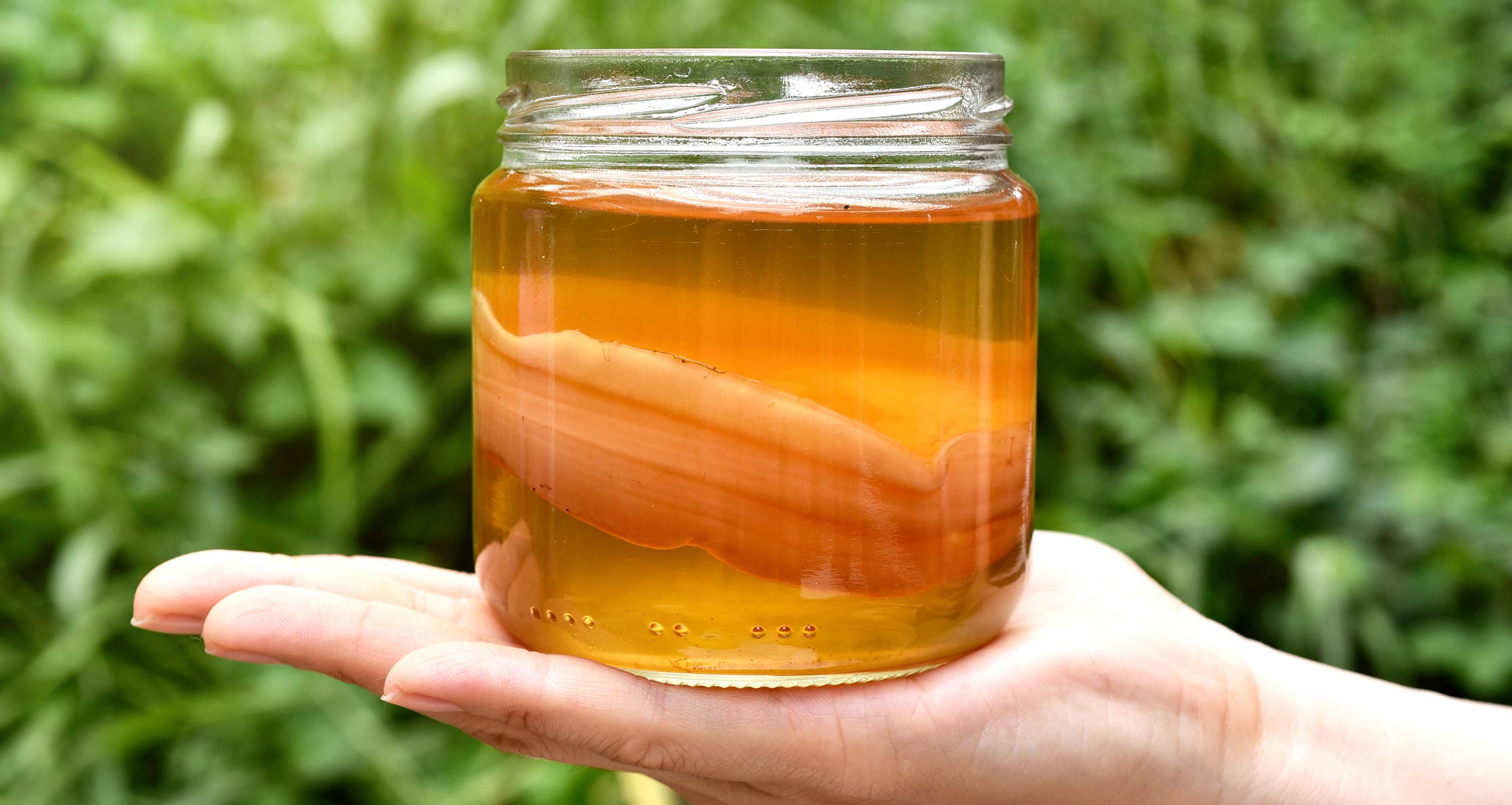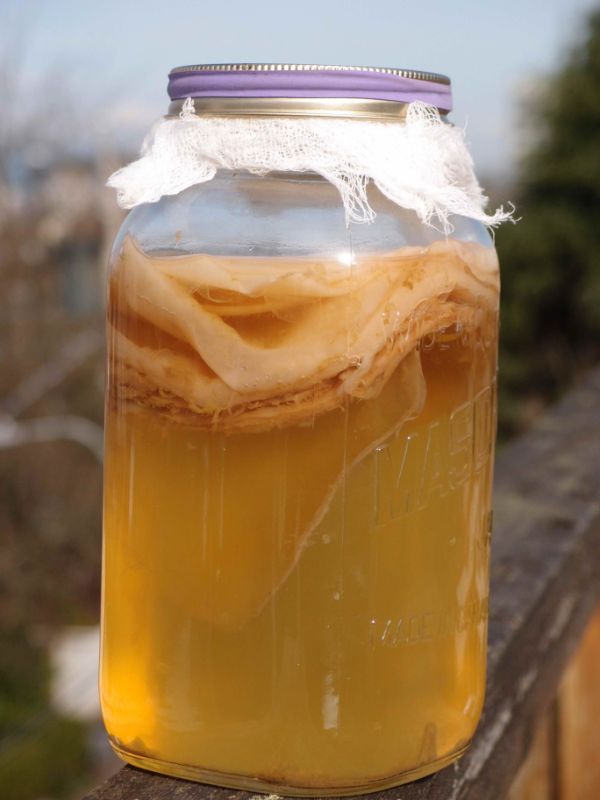Is Kombucha Carbonated? Uncovering The Fizz In Your Favorite Fermented Drink
Have you ever taken a sip of kombucha and felt that delightful, effervescent tingle on your tongue? It's a common experience, and for many, that fizz is a big part of the drink's appeal. That said, it makes you wonder, is kombucha carbonated, or is there something else going on? People often ask about this very thing, curious about what gives this popular beverage its signature sparkle.
Kombucha tea, as a matter of fact, is a fermented drink made with tea, sugar, bacteria, and yeast. This unique combination, you know, comes together in a special way to create something quite distinct. It’s not just a sweet tea; it transforms through a fascinating natural process.
The whole journey of making kombucha, actually, involves these tiny living things working their magic. They eat the sugar and, in doing so, they make some interesting byproducts. One of these byproducts, as we'll see, is the very thing that gives kombucha its famous bubbles, which, really, is a pretty cool trick of nature.
- Tabletop Lighted Makeup Mirror
- Oprahs Glasses
- Has Slash Ever Sang
- Sunshine Deadliest Catch
- Alexis Bellino House Address
Table of Contents
- What is Kombucha, Anyway?
- So, Is Kombucha Carbonated? (The Short Answer)
- The Science Behind the Fizz: How Carbonation Happens Naturally
- Why Does Carbonation Vary in Kombucha?
- Is Natural Carbonation Good for You?
- Common Questions About Kombucha's Fizz
What is Kombucha, Anyway?
Kombucha tea, in a way, is a drink that has been around for a long time. It’s a fermented beverage made with tea, sugar, bacteria, and yeast. You might think it sounds a bit unusual, but it’s quite simple once you know the basics.
To make the drink, first, the bacteria and yeast must grow together. They form a special culture, you know, which is often called a SCOBY. This culture, really, looks a bit like a flat, rubbery disc. It floats on top of the tea mixture.
This SCOBY, then, is added to the sweetened tea. It’s this living culture that starts the whole process. The tea itself can be black tea or green tea, or even a mix of both, so, there's some variety there.
The Magic of Fermentation
Fermentation is, essentially, a natural process. It’s what happens when microorganisms, like the bacteria and yeast in the SCOBY, break down substances. In the case of kombucha, they work on the sugar that is in the tea.
This process changes the tea. It gives it a distinct flavor, a bit tangy and sometimes a little vinegary. It also, quite importantly, creates the carbonation that we are talking about.
The microorganisms, you see, are quite busy. They transform the sugar into other compounds, which, really, is a pretty neat trick. This is the heart of what makes kombucha, well, kombucha.
So, Is Kombucha Carbonated? (The Short Answer)
Yes, kombucha is carbonated. It gets its fizz from a natural process. This means that the bubbles you see and feel are not usually added artificially. They come about as a direct result of how the drink is made.
The carbonation is a byproduct of the fermentation. The yeast and bacteria are doing their job, you know, and the bubbles appear. It’s a bit like how bread rises or how beer gets its foam, in a way.
So, when you enjoy a glass of kombucha, that lively sparkle is a sign that the fermentation process worked. It’s a natural part of the drink’s character, and, frankly, it’s what many people love about it.
The Science Behind the Fizz: How Carbonation Happens Naturally
Understanding how kombucha gets its bubbles means looking a little closer at the fermentation. It’s a simple chemical reaction, but it’s quite powerful. The yeast and bacteria are the key players here.
They don't just sit there; they are active. As they consume the sugar in the tea, they produce certain things. One of these things is alcohol, and another is carbon dioxide gas. This gas is what causes the fizz.
It’s a natural part of their life cycle, really. They are just doing what microorganisms do. And, as a matter of fact, we get to enjoy the bubbly result.
Sugar, Yeast, and Bacteria: A Team Effort
The process starts with the sugar. The yeast in the SCOBY, you know, eats the sugar first. When yeast consumes sugar, it creates alcohol and carbon dioxide gas. This is the initial step for the bubbles.
Then, the bacteria come in. The bacteria in the SCOBY then eat the alcohol. They turn it into beneficial organic acids, which give kombucha its characteristic tangy taste. This second step, too, helps shape the final product.
So, it’s a two-part act, more or less. The yeast makes the gas, and the bacteria refine the flavor. It’s a pretty efficient system, actually, that creates a complex and refreshing drink.
Trapping the Bubbles
For the carbon dioxide gas to create fizz, it needs to be trapped. During the initial fermentation, the kombucha is often in an open container. This allows some of the gas to escape into the air.
However, once the kombucha is bottled, especially in sealed bottles, the gas has nowhere to go. It dissolves into the liquid. When you open the bottle, the pressure releases, and the dissolved gas forms bubbles. This is, you know, the same principle behind soda.
This trapping of gas is what gives kombucha its delightful pop and sparkle. It’s a crucial step for getting that satisfying effervescence that people expect from the drink, really.
Why Does Carbonation Vary in Kombucha?
You might notice that some kombuchas are super fizzy, while others are just a little bubbly. This difference, as a matter of fact, comes from several factors. It’s not always the same level of carbonation.
The way kombucha is made, you know, can greatly affect how much fizz it has. Small changes in the process can lead to big differences in the final product. It’s a bit of an art, really, to get it just right.
Understanding these factors can help you appreciate why your favorite brand might be more or less fizzy than another. It's all part of the natural variation that comes with fermented drinks, you know.
Fermentation Time and Temperature
The length of time the kombucha ferments plays a big role. A longer fermentation period, typically, allows more sugar to be converted. This means more carbon dioxide can be produced.
Temperature also matters a lot. Warmer temperatures tend to speed up the fermentation process. This can lead to more gas being made more quickly. Colder temperatures, on the other hand, slow things down.
So, if a kombucha was fermented in a warmer place for a longer time, it will likely be more carbonated. It’s a delicate balance, actually, to control these elements for the desired fizz.
Second Fermentation (F2)
Many kombucha makers use a "second fermentation" step, often called F2. This is where the bottled kombucha is allowed to ferment again, but this time in a sealed container.
During F2, people often add fruit, fruit juice, or other flavorings. These additions provide more sugar for the yeast to consume. This extra sugar, you know, gives the yeast another chance to produce more carbon dioxide.
This second fermentation is where a lot of the intense fizz develops. It’s a common technique for getting a really bubbly kombucha, actually, and it also helps infuse flavors.
Ingredients and Flavorings
What goes into the kombucha can also affect its carbonation. As mentioned, adding fruit or juice during F2 provides more food for the yeast. This leads to more gas production.
Some ingredients, you know, might have natural sugars that contribute to the fizz. Even the type of tea used can have a subtle effect. It’s all part of the complex chemistry.
So, a kombucha flavored with something like ginger or berries might be more carbonated than a plain one. It's because those flavors often bring extra sugars for the fermentation to work on, you know.
Is Natural Carbonation Good for You?
The natural carbonation in kombucha is, really, just carbon dioxide gas. It’s the same gas that makes soda fizzy, but in kombucha, it's a natural byproduct of the fermentation process. There isn't anything inherently harmful about the carbonation itself.
The benefits of kombucha, you know, are often linked to its probiotic content. It has bacteria and yeast that can be good for your gut. However, it's important to remember that fermented beverages, such as kombucha and kefir, also may have higher levels of tyramine. This is just something to be aware of.
It's also worth noting that the Mayo Clinic does not endorse any specific company or product. Their advertising revenue supports their non-profit mission. So, while kombucha can be a refreshing drink, it's good to approach health claims with a balanced view. You can learn more about fermented foods on our site, and link to this page for more health information.
Generally, enjoying kombucha in moderation is a good approach. The natural fizz is just part of the experience. It’s a tasty way to get some probiotics, for sure, but like anything, balance is key.
Common Questions About Kombucha's Fizz
People often have questions about kombucha’s bubbles. Here are some common ones, and, you know, the answers that help explain things.
How does kombucha become carbonated?
Kombucha becomes carbonated through the natural process of fermentation. The yeast in the SCOBY eats the sugar in the sweetened tea. As a result of this, it produces alcohol and carbon dioxide gas. This gas, when trapped in a sealed bottle, creates the fizz. It’s a completely natural part of the brewing, actually.
Is kombucha naturally carbonated?
Yes, kombucha is naturally carbonated. The bubbles come from the yeast and bacteria doing their work during fermentation. It's not usually from added carbon dioxide, like in some soft drinks. This natural process is what gives kombucha its authentic character. It’s a key difference, you know, between kombucha and many other fizzy drinks.
What makes kombucha fizzy?
What makes kombucha fizzy is the carbon dioxide gas that is produced by the yeast during fermentation. When the yeast consumes the sugar in the tea, it releases this gas. If the gas is contained, it dissolves into the liquid. When you open the bottle, the pressure drops, and the gas escapes as bubbles, making it fizzy. It’s the same basic principle, really, that makes any carbonated drink bubble.
For more general information on fermented drinks and their properties, you might find resources like the National Center for Complementary and Integrative Health helpful, just as a general reference point. They often have information on various health topics.
- Robert And Paula Sims
- Greg Wise Book
- Johnny Knoxville Glasses
- Orthopedic Toe Spacers
- Austin Regier Uw Rowing

Kombucha Tea: Should You Drink This Fermented Tea?

Kombucha : recette facile pour une boisson naturelle aux bienfaits
:max_bytes(150000):strip_icc()/__opt__aboutcom__coeus__resources__content_migration__simply_recipes__uploads__2020__04__How-to-Make-Kombucha-LEAD-22-1858cbec5781469ca5b3de1f22320ae8.jpg)
How to Make Kombucha at Home